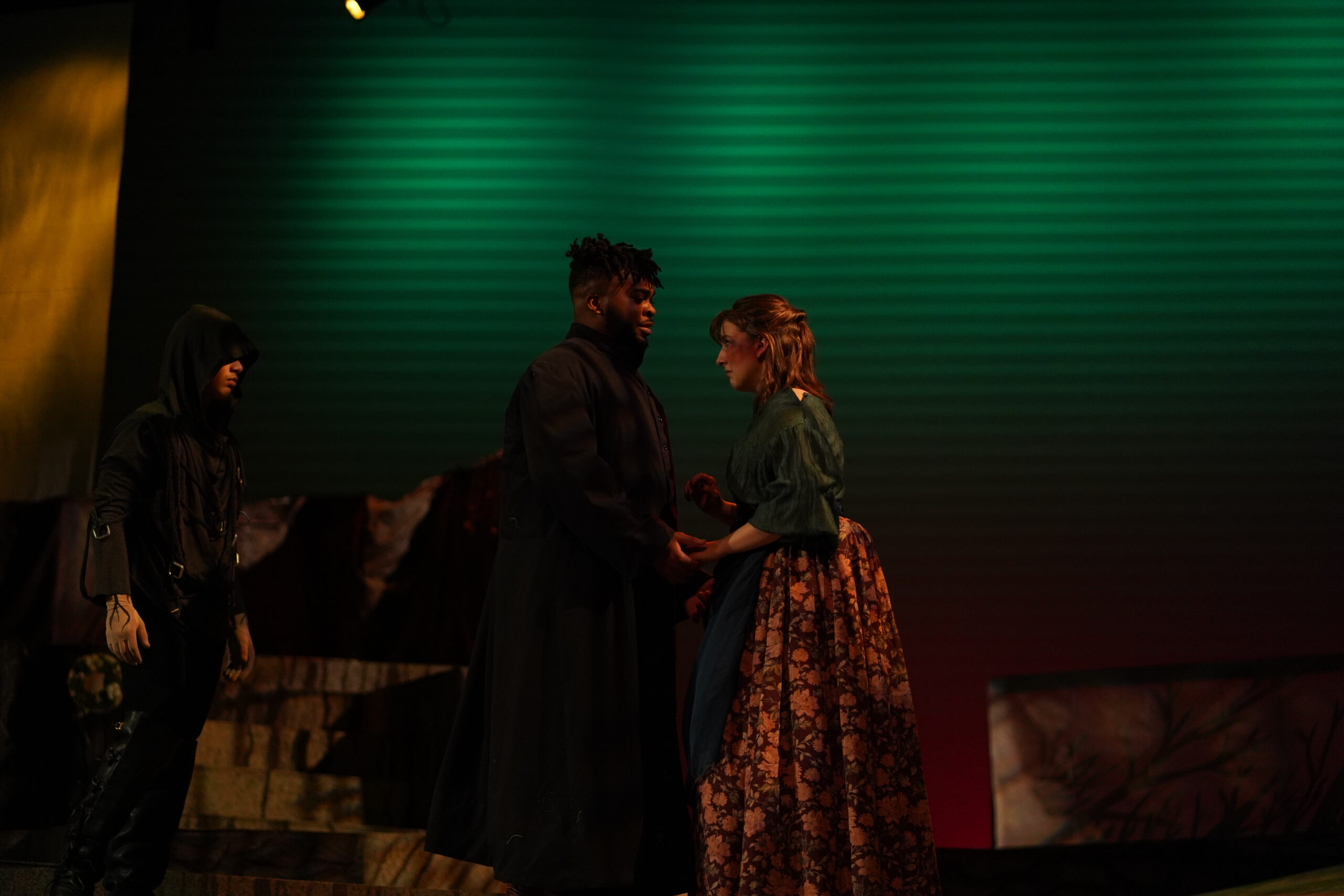EPHRAIM — In 1953, Arthur Miller took the story of 1692 Salem witch trials and created his best-known script, The Crucible. The play is a mix of fact and fiction — but which many now mistake for full truth. Having had two opportunities to travel to Salem recently, I have become intrigued by the events of the Salem Witch trials. So, when director Charley Roetting requested a review of The Crucible, I jumped at the chance to write the first UTBA review of a Snow College production. As a proud Snow Alumni (class of ’99!), I am thrilled to see how the campus has changed grown in the arts.
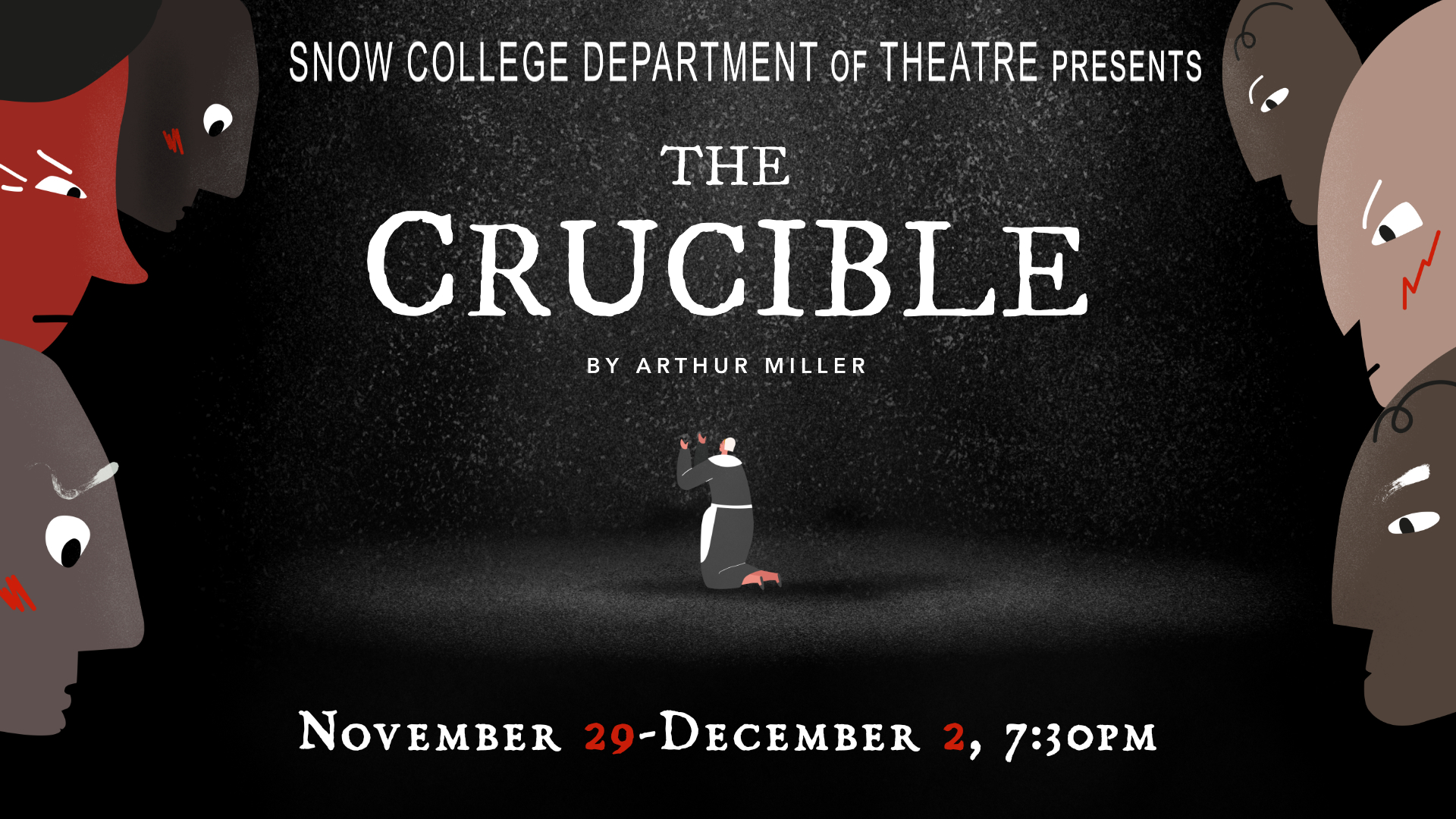
Since I was there, the old Crane theatre has changed into the beautiful Eccles Performing Arts Center. Snow has invested a lot into their arts programs and even offers its only bachelor’s degree in music. The performing arts center was buzzing with a choral event at one side of the building and The Crucible at the opposite side, in the 535-seat theater. Inside the performance space, there is folk music playing and the set (designed by Trent Bean) feels almost like a hidden forest, with haunting elements all around. That feeling is heighted by the eerie lighting design by Ari Jamieson and Roetting’s choice to have cast members as “spirits” dressed in black roaming the stage. Costumed by designer Jess Wallace, these spirits were a fascinating interpretation of Miller’s historical fiction, the importance of the story’s message, and the mysteries of the unsaid and unknown.
The Crucible tells the story of Abigail (played by Taya Wescott) and several other young ladies in the town who become entangled in the hysteria known today as the Salem Witch Trials. To this day, historians still do not know or understand why these things happened or what the truth was.
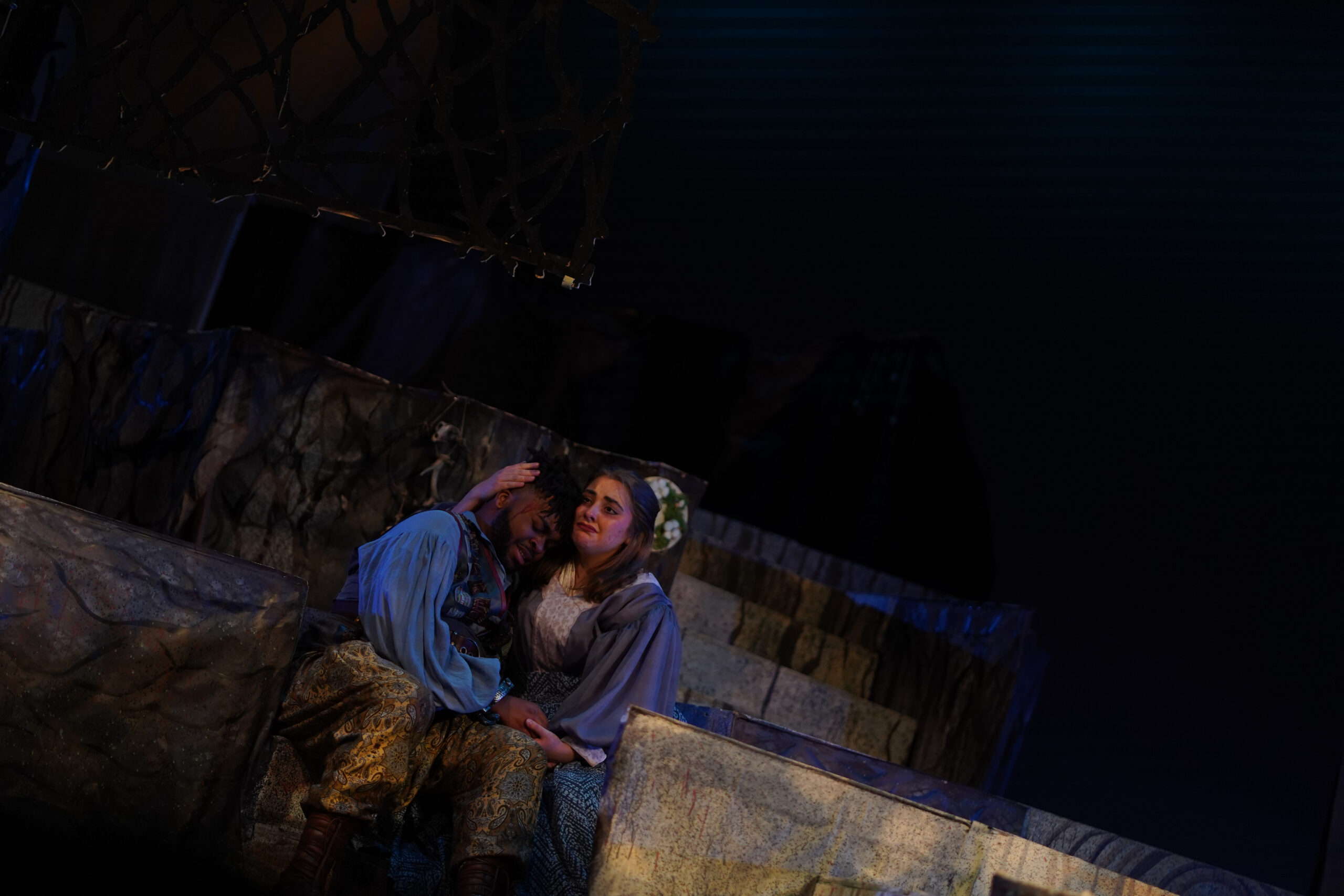
Earlier this month, I attended a theatre critics conference and a panelist said that she had been given wise counsel that producers should not mount older shows unless they have something new to say. The production team at Snow has fulfilled this mandate so well with The Crucible with a production that asks: what is truth? Roetting told me at intermission that each member of the chorus of spirits had a backstory of a historical figure who perished in the Salem events of the 1690s. There seemed to be a theme that anyone who communed with these spirits had black somewhere in their costume; once the character died, they changed to full black clothes. The haunting of these spirits was very beautiful and tragic to me. By adding this costume element, the Snow College team enriched the story, said something new about an old play, and emphasized the incomplete knowledge that modern historians have about what happened in Salem.
Additionally, Roetting’s casting choices were refreshing. While I enjoyed every single cast member, two female actors were cast in traditionally male roles: Kate Matthews as Parris and Charlotte Davidson as Giles Corey. These two performers were some of the most well-seasoned and competent players on stage. Both characters were addressed as male, but Wallace dressed one as a female and another as a male. I am not certain why this choice was made (though it may be because most theatre companies’ casting pools have a shortage of men), but the decision did not seem out of place. Sure, I had the initial thought of, “Hmmm, that is different,” but the natural flow of the story, the way these players portrayed their characters, and the interactions they had with each other truly showed that the best person was chosen for the role. It showed that Snow’s theatre department could be a great place for any actor.
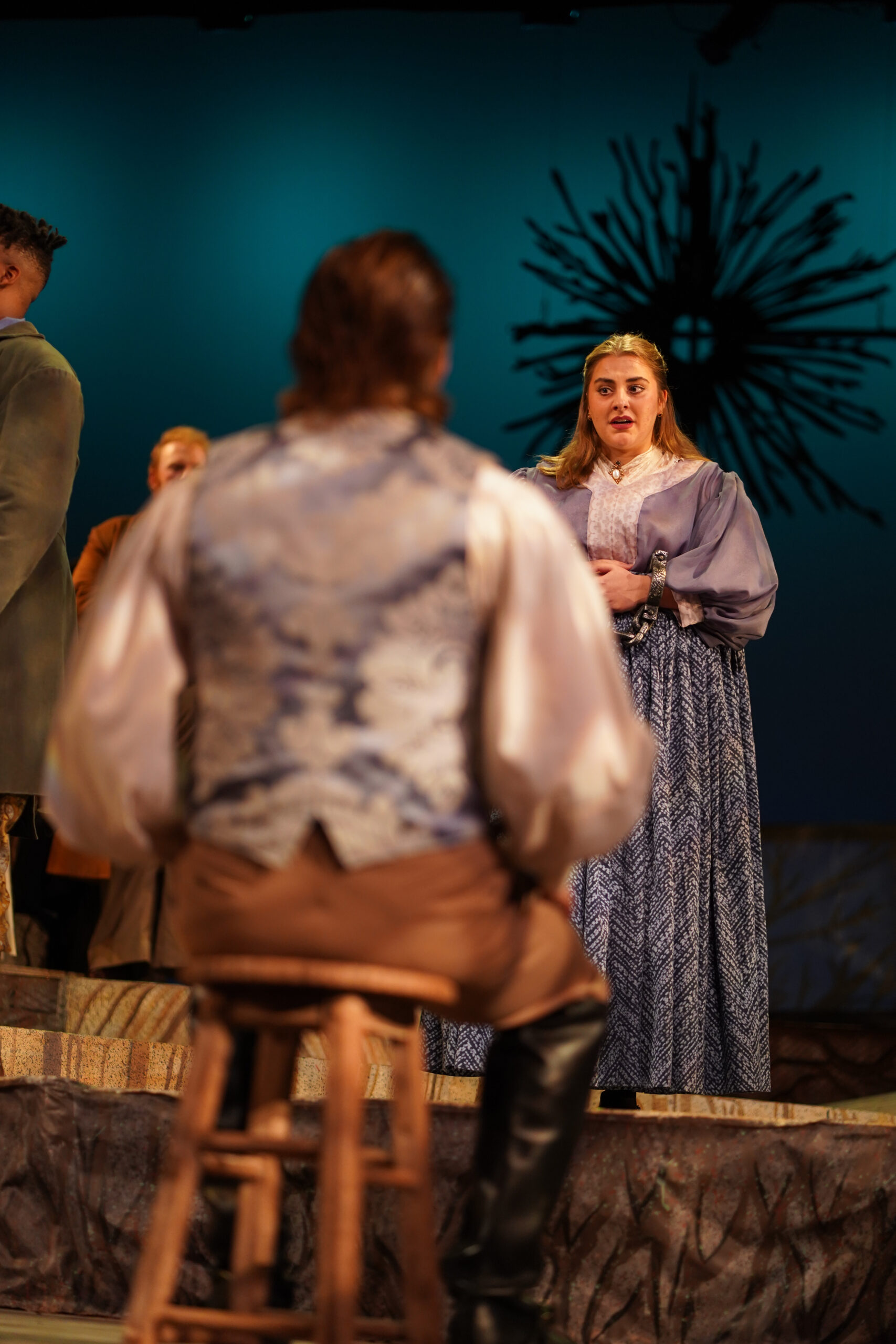
Another strong performance came from Soibi Ross as John Proctor. Ross portrayed the character’s and trajectory (the best in the play) well, starting with a gentle portrayal that leads to a steady climb to his final monologue. Ross’s gave a virtual master class in how to show a character learn and grow. I found it absolutely believable to which the dramatic choice made at the end of the show because of the seeds he had planted earlier in the evening and the way Ross was able create a compelling character.
Indeed, I was impressed with each person on stage. Even actors who had no lines or appeared just briefly on stage, I felt like performer actor created a fully fledged character with a backstory full of motivation and depth.
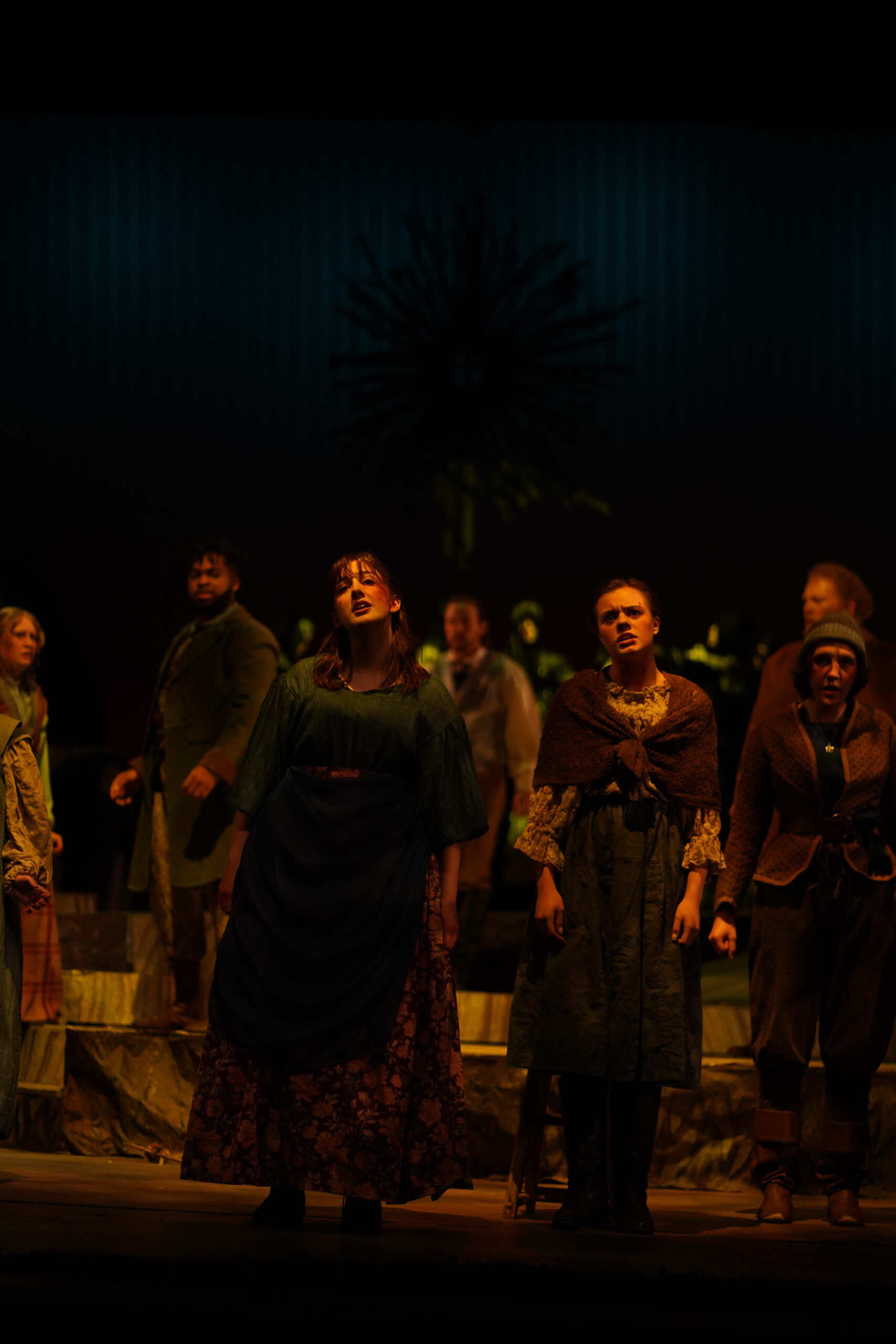
Needless to say, Snow College’s The Crucible was a moving and thoughtful experience. Yes, it took me over two hours to drive to Ephraim. And due to the amazing hospitality of the Snow College performing arts department after the show, I was not home until way after an old theatre lover’s bed time. But I was able to see high-quality art — and for a price ($10) that is astonishingly low, given the impressive talent involved. But even more impressive (and important!) is the extremely good theatre education that these students receive, which is on par with other college-level theatre departments in Utah. Both students and the audience can gain through their experience with this production of The Crucible. The show overflows with relevance, as its actors grapple with questions of truth, fiction, and perception.
[box]The Crucible plays nightly at 7:30 PM in the Kim Christison Theatre in the Eccles Performing Arts Center on the campus of Snow College. Tickets are $3-10. For more information, visit www.snow.edu/academics/fineart/theatre.[/box]

